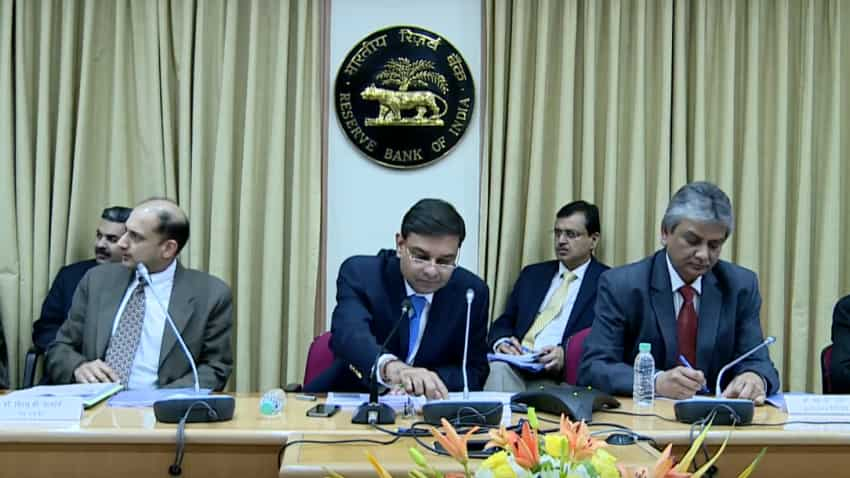RBI monetary policy: What does a 0.25% hike in reverse repo rate mean
Adhil Shetty, CEO & Co-founder BankBazaar.com said, "As expected, the RBI has deviated its liquidity management strategy from being accommodating to being neutral. Inflationary trends are gathering pace. Hence, to get a control over it and to squeeze excess liquidity out of the banking system, RBI has increases the reverse repo rate."

Reserve Bank of India's (RBI) first bi-monthly for financial year 2017-18 saw tightening of money market as RBI governor Urjit Patel along with Monetary Policy Committee (MPC) kept repo rate unchange at 6.25% but made a 25 basis point increase in reverse repo rate.
Data compiled by RBI showed that after demonetisation, surplus liquidity in banking system dropped from Rs 7,95,600 crore in January 2017 to an average of Rs 6,01,400 crore in February 2017 and further came down to Rs 4,80,600 crore in March 2017.
RBI said, "Though currency in circulation expanded after demonetisation, it's impact was offset by a significant decline in cash balances of the Government up to mid-March which released liquidity into the system."
Adhil Shetty, CEO & Co-founder BankBazaar.com said, "As expected, the RBI has deviated its liquidity management strategy from being accommodating to being neutral. Inflationary trends are gathering pace. Hence, to get a control over it and to squeeze excess liquidity out of the banking system, RBI has increases the reverse repo rate."
Naresh Takkar, MD & Group CEO, ICRA Ltd said, "The increase in the reverse repo rate and status quo on the cash reserve ratio are likely to offer relief to banks from the point of view of managing the costs associated with their excess liquidity."
Reverse Repo rate is the rate at which the central bank borrows money from banks.
This comes as a positive for banks and it could motivate banks to park more money with RBI to earn higher interest on idle cash.
Reverse repo rate hike also comes as a measure to decrease inflation.
RBI said, "There are upside risks to the baseline projection. The main one stems from the uncertainty surrounding the outcome of the south west monsoon in view of the rising probability of an El Niño event around July 2017 - August 2017, and its implications for food inflation."
Headline CPI inflation is set to undershoot the target of 5% for Q4 of FY17 in view of the sub-4 per cent readings for January and February. For 2017-18, inflation is projected to average 4.5% in the first half of the year and 5% in the second half.
With higher reverse repo leading to banks parking more money with RBI, supply of money in financial markets will decrease resulting in in decline in inflation rate.
Get Latest Business News, Stock Market Updates and Videos; Check your tax outgo through Income Tax Calculator and save money through our Personal Finance coverage. Check Business Breaking News Live on Zee Business Twitter and Facebook. Subscribe on YouTube.
RECOMMENDED STORIES

EPFO Pension Schemes: Early pension, retirement pension, nominee pension and 4 other pension schemes that every private sector employee should know

Tata Motors, Muthoot Finance and 3 more: Axis Direct recommends buying these stocks for 2 weeks; check targets, stop losses

Senior Citizen Latest FD Rates: Know what major banks like SBI, PNB, Canara Bank, HDFC Bank, ICICI Bank are providing on fixed deposits
04:40 PM IST












 RBI cancels licence of Vijayawada-based Durga Co-op Urban Bank
RBI cancels licence of Vijayawada-based Durga Co-op Urban Bank  Reserve Bank amends master direction on KYC
Reserve Bank amends master direction on KYC  Nearly 98% of Rs 2000 banknotes returned; Rs 6,970 crore worth notes still with public
Nearly 98% of Rs 2000 banknotes returned; Rs 6,970 crore worth notes still with public Rupee settles on flat note, rises 1 paisa to 84.07 against US dollar
Rupee settles on flat note, rises 1 paisa to 84.07 against US dollar  Retail inflation likely to average 4.5% in FY25: RBI Deputy Governor
Retail inflation likely to average 4.5% in FY25: RBI Deputy Governor